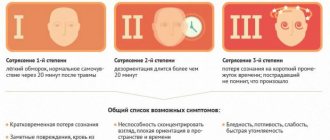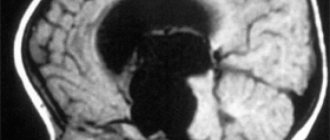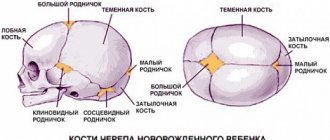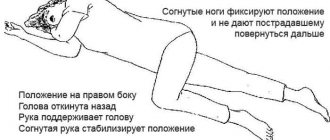Transcranial brain micropolarization (TCMP) is a procedure based on the effect of direct current on nerve tissue. Polarization using low-intensity electric current promotes the formation of new connections between neurons, thereby improving brain function.
The history of TCMP began in the 70s and 80s of the 20th century, and during its use in medical practice it has come a long way. Initially, transcranial micropolarization as a therapeutic technique was developed by the Research Institute of Experimental Medicine of the USSR Academy of Medical Sciences as a method of treating asthenic syndrome. Later, brain micropolarization found wide application in pediatrics.
This is primarily due to the high sensitivity of the actively developing child’s brain to any external influences. Micropolarization of the brain in children gives a much greater effect than the same procedure can have on adult patients: severe dysfunctions of its functions begin to recede as new nerve cells develop and a web of neural connections forms. What kind of diseases can micropolarization cope with?
Indications for TCMP include the following pathological conditions:
Cerebral palsy of various origins and other organic lesions of the child’s central nervous system;
- Delayed neuropsychic development and speech disorders;
- Autism;
- ADHD, nervous tics and other neurotic disorders;
- Urinary and fecal incontinence;
- Consequences of neuroinfections and traumatic brain injuries;
- Visual impairments such as nystagmus, strabismus, amblyopia;
- Sensory hearing loss;
- Asthenic syndrome;
- Headaches associated with overwork.
A very important point is that micropolarization will not cause any unpleasant sensations to the child - reviews say that patients do not feel the effects of a weak current at all. It is no less important that micropolarization is absolutely safe for most patients. There are few contraindications to the procedure: any cancer, benign and malignant brain tumors, epilepsy, the presence of a pacemaker, severe mental illness such as schizophrenia, as well as decompensated arterial hypertension.
Working with defect teachers, speech therapists, and performing other procedures aimed at brain development enhances the effect that micropolarization has on children. Reviews indicate that the best results can be achieved within the framework of complex therapy. A course of procedures relieves nervousness, improves motor skills, and, by stimulating the functioning of all brain systems, increases the child’s cognitive functions.
The only drawback that transcranial micropolarization has is the price of the devices, which is unaffordable for most residents of Russia. Devices for carrying out procedures cost from one hundred thousand rubles or more, and usually they can only be found in a hospital, a visit to which, again, can be very expensive, and in many cases is simply not available.
There is a way out of this situation. The Elfor-Prof multifunctional device for electrophoresis and galvanization costs ten times less, but is in no way inferior to expensive devices, and is suitable not only for TCMP, but also for other physiotherapeutic procedures. Reviews left by parents of young patients, as well as adult patients who underwent brain micropolarization with its help, indicate that the positive effect of procedures at home is not inferior to the effect of procedures in a hospital.
To perform TCMP at home, in addition to the device itself, you will need electrodes of the appropriate shape. They are present in a set specially created for our clients. In the Physiosphere store you can purchase both Elfor-Prof and electrodes for it.
Micropolarization - what is it?
Micropolarization of the brain is the effect of a low-frequency electric current of low strength on it. The treatment was developed to correct organic brain lesions in previously intact patients. Electrical exposure is carried out during the rehabilitation period after injuries or stroke.
In children, micropolarization of the brain for autism and delayed speech development has recently begun to be used. As an official technique, it is carried out at the Bekhterev Institute.
There are:
- Transcranial treatment. Here, electric shock is applied directly to the child’s brain.
- Transvertebral impact. Electric current affects the brain indirectly, stimulating the spinal cord.
How is micropolarization done? Electrodes are connected to the patient (on the head or back area) for 10 to 50 minutes (the time is increased gradually with each session). The baby can play or relax. Exposure to electric current does not cause any discomfort, since its strength is comparable to natural impulses.
The course of treatment is 10-12 sessions, the time of which is increased progressively. It is believed that the treatment has a delayed effect, so it can be assessed after 2-3 months. Repeated micropolarization of the brain in autism is allowed to be carried out no earlier than after 6 months. This time is necessary for an objective assessment of the effect of therapy on the child’s development.
Carrying out micropolarization
The course of necessary procedures is prescribed by a neurologist. Before the procedure, the patient is prescribed all the necessary tests and pathology is diagnosed in order to exclude possible contraindications. Electroencephalography of the brain is usually prescribed.
Before the session, electrodes are installed on the child, through which a low-frequency current will pass. The doctor determines individual settings.
The duration of the session is 20-40 minutes. During the procedure, the patient does not experience any pain or discomfort. It is allowed to watch cartoons, read, do puzzles, draw or play board games. Intense physical activity is not advisable, but complete immobility is also not required.
If a child is afraid of a procedure that is unclear to him, it is carried out in the presence of the mother.
Adult patients also tolerate the brain stimulation procedure positively; the effect of the current on nerve tissue is not felt.
The therapeutic corrective effect of micropolarization is cumulative, so a course of therapeutic sessions is necessary for a successful result. Their number is determined by the attending physician. As a rule, one course includes 15-20 sessions. You can repeat the treatment after 3-4 months to consolidate the results.
The first positive changes in the child’s behavior, development and learning will become noticeable 1-2 months after completion of the full therapeutic course.
In cases of profound autism, severe mental retardation, and Down syndrome, conducting sessions allows one to achieve positive changes in behavior, perception of the world, understanding the speech of others, and performing simple tasks.
The effectiveness of therapy should be supported by classes with a speech pathologist, psychologist, speech therapist, as well as physiotherapeutic procedures and therapeutic massages.
Micropolarization – benefit or harm?
It is considered proven that micropolarization of the brain during speech delay has a positive effect, stimulating and strengthening synaptic connections. In the case of autism, the causes of which are themselves poorly understood, micropolarization is recommended as a method to “try.”
Article on the topic: Bioacoustic method with a wide range of applications
Note! There is no official evidence of the effectiveness of micropolarization for the treatment of autism. The promotion of the method is based on the hypothetical benefits and positive experience in the rehabilitation of adult patients with speech and motor disorders.
It is officially believed that exposure to a weak current for short sessions cannot cause any harm. However, there are conditions in which such treatment cannot be carried out.
Contraindications
Micropolarization is contraindicated in case of individual sensitivity to the action of electrical impulses.
Electrical treatment is not carried out:
- for dermatological diseases localized at the site where the electrodes are attached;
- with increased excitability of patients;
- children with autism who are prone to hysterical reactions;
- patients who have vascular pathologies;
- patients with neoplasms;
- simultaneously with taking psychotropic medications;
- simultaneously with a course of other physiotherapy procedures.
If you have doubts about the benefits of the treatment, you should refuse the procedures. Autism as a disease is poorly understood. Micropolarization in autism remains just as little studied.
Contraindications
The micropolarization method has a number of conditions under which the use of the procedure is undesirable and requires consultation with a doctor. This:
- electric current intolerance
- cancerous tumors
- cold, infection, virus
- period after vaccinations
- the presence of foreign bodies in the spine or skull
- damage to the skin where the electrodes are attached
- diseases of the cardiovascular system
- systemic blood diseases
Micropolarization is incompatible with those types of diagnostics and therapy that are based on magnetic and electric fields. In particular, with MRI, muscle electrical stimulation and vibration stimulation.
Who is the treatment indicated for?
Experts recommend micropolarization for speech delay, autism, and epilepsy. The positive effect is manifested in the patient’s daily life. Increased interest in what is happening around, the emergence of new words, the desire to interact with other people, an emotional response to touch or treatment.
Positive reviews about the influence of micropolarization on speech development, social adaptation and behavior of children with developmental disorders allow us to note:
- improving the child’s adaptive capabilities;
- increased emotional background, improved mood;
- stabilization of night sleep, facilitating the process of falling asleep;
- improvement of short and long-term memory;
- increasing concentration and learning ability.
Among the improvements in the physical condition of the body, an increase in visual acuity and the disappearance of problems with bedwetting have been officially recorded in some children.
Indications for use
The procedure is effective both for serious neurological disorders in children and for delayed mental and speech development. Indications for micropolarization are:
- cerebral palsy;
- all types of autism;
- Down syndrome;
- oligophrenia;
- various diseases that cause developmental delays;
- suffered traumatic brain injuries;
- bed-wetting;
- stuttering and other speech disorders;
- hyperactivity and attention deficit disorder;
- impairment of visual and auditory functions;
- emotional instability, aggressiveness, increased anxiety;
- various phobias and depressive states.
Micropolarization can be recommended for children with unstable attention, problems with performance and the ability to concentrate, and those who are lagging behind in their studies. The procedure improves memory, stimulates the development of cognitive skills, and builds resistance to stressful situations.
When installing electrodes in the brain area, transcrial micropolarization is performed.
Reviews
Reviews from parents whose children have undergone electric shock treatment are contradictory. Some note that the effect is positive. Some make videos about the dangers of micropolarization for autistic children, noting regression in the development of communication and self-care skills.
Reviews from specialists who work directly with autistic people are mostly positive or neutral. Doctors note that the negative effect after treatment is short-term. The delayed effect is always positive.
Since the micropolarization method in the treatment of children with autism has been little studied, each parent has to make their own decision.
Autistic mother: “There are a lot of charlatans hanging around our children with “one hundred percent” effective methods. Just have time to pay, but no one guarantees the effect. How do you know if micropolarization really helps? Or is this just another commercial project?
Article on the topic: Tomatis method in the treatment of autism
Who should not undergo treatment
Despite its safety, this therapy has a number of contraindications:
- acute inflammatory diseases (even greater stimulation of inflammation is possible);
- aggravated chronic diseases accompanied by elevated temperature;
- foreign bodies in the cranial bone;
- the presence of malignant brain tumors (can accelerate the development of cancer cells);
- cardiovascular failure and any heart pathologies;
- hypersensitivity to electric current;
- violation of the integrity of the scalp;
- excessive pigmentation or rash at the site where the electrodes are applied;
- connective tissue diseases;
- congenital stenosis.
Severe mental or genetic diseases, mental retardation, Down syndrome and autism are not contraindications to TCM, but therapy in such cases is ineffective and not very advisable. But some experts still recommend taking a course of micropolarization for at least the slightest shift
in a positive way.
Results from therapy
The effect is observed already from the first current stimulation, although the procedure is always prescribed in a course. The baby's relatives may not notice changes in the child's behavior or physiology, but they are clearly visible on the encephalogram
.
Therefore, it is recommended to undergo a brain examination to see the result confirmed by the study. The most obvious changes after the first session:
- Restoration of many psychological functions. The little patient is already adapting more quickly to the outside world, socialization is proceeding normally, attacks of nervousness and excessive hyperactivity are beginning to subside.
- Increased mental activity. The child perceives new information better, and creative inclinations begin to appear.
- Improved vision and hearing.
- Normalization of the speech apparatus. Stuttering and burr disappear or become less intense.
- Restoration of motor functions of the limbs.
- Normalization of the functioning of the pelvic organs. Enuresis and uncontrolled bowel movements disappear.
In some cases, this type of therapy is superior to drug treatment. The child becomes more sociable, active, and has no causeless mood swings. Doctors offer systemic micropolarization treatment to completely restore the mental and physical functions of the baby’s body.
Where can I get the procedure done?
The possibility of treatment depends on the availability of equipment and specially trained personnel in the clinic. There are two centers in Russia offering this service (the exact addresses can be viewed on the official websites):
- Moscow: Clinic of Restorative Neurology RUND;
- St. Petersburg: Research Institute of Neuropsychology named after. V.M. Bekhterev;
- Voronezh: clinic “Alternative Plus”.
For most people, treatment is expensive not only because of the cost of the procedure itself, but also because of the need to travel to another city. The lack of similar institutions in other large cities further hampers the development of this treatment method in Russia.











